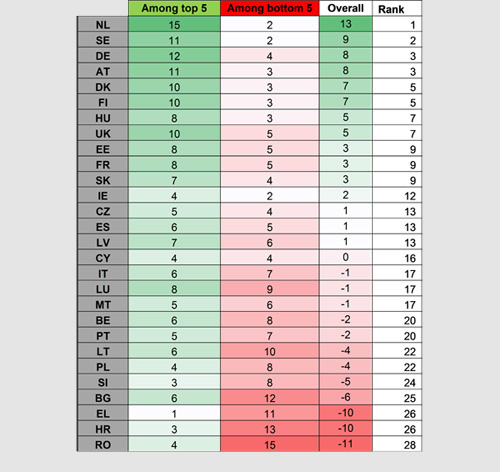Transport Scoreboard 2016: the EU at work to strengthen the internal market
The European Commission published the 2016 edition of the “EU Transport Scoreboard”, a benchmark which compares how Member States perform in 30 categories covering all aspects of transport.
The objective of the Scoreboard is to help Member States identify areas requiring priority investment and action. It shows how the EU further deepens the internal market in transport and promotes the shift towards low-emission mobility, two priorities of the Juncker Commission.
EU Commissioner for Transport Violeta Bulc said “My objective is to have a high quality, decarbonised, fully integrated and efficient transport system. The scoreboard serves as a road sign on this journey, pointing the way and indicating the distance still to be covered. It is a useful tool for us, for Member States, and for stakeholders, to identify where we do well and where further investment and actions are needed. It is particularly encouraging to see that the efforts of this Commission to bridge the investment gap in the transport sector are starting to bear fruit.”
The Netherlands tops the Scoreboard for the third year running with high scores in 15 categories, followed by Sweden, Germany and Austria. While they have different strengths, they all share a solid framework for investment, good transport safety scores, and a good record of implementing EU law.
The main findings:
1. Low emission mobility
There is progress across the EU towards more sustainable and environmentally friendly mobility (for example in the share of renewable energy for transport and in the number of new cars using alternative fuels). However, levels are still low and the fact that some Member States are clear front-runners shows the potential to accelerate the shift towards low-emission mobility. To this end, the Commission adopted a European Strategy for low-emission mobility in July 2016
2. Infrastructure
Investment in transport infrastructure takes time to show effects. However, some positive effects of investment can be seen in the perceived quality of transport infrastructure. This will become more pronounced in the coming years with additional investment, especially through the Connecting Europe Facility and the Commission’s Investment Plan for Europe
3. People
- Consumer satisfaction with all modes of transport (urban, rail, air) has increased across Europe. This suggests that people’s needs are understood and that the right investment decisions are being taken.
- The number of road deaths is stagnating. While European roads remains by far the safest in the world, Member States need to intensify efforts in order to reach the 2020 target of halving the number of road deaths.
- The number of women employed in the transport sector is increasing, but the overall share of women remains low. Action to get more women into transport a job is needed at all levels, the Commission is considering adequate initiatives.
The Scoreboard brings together data from a variety of public sources (such as Eurostat, the European Environment Agency and the World Economic Forum). It can be consulted either by country or by topic (Internal Market, Investment and Infrastructure, Energy Union and Innovation, People).
In the resulting tables, the top 5 performers are marked in green and the bottom 5 performers in red. The following table shows how often each country appears among the top and bottom performers. The overall score is calculated by subtracting negative scores from positive ones (tables right).
For more information
- Please see the MEMO for more information country by country.
- Multilingual country-specific fiches
- A European Strategy for low-emission mobility









